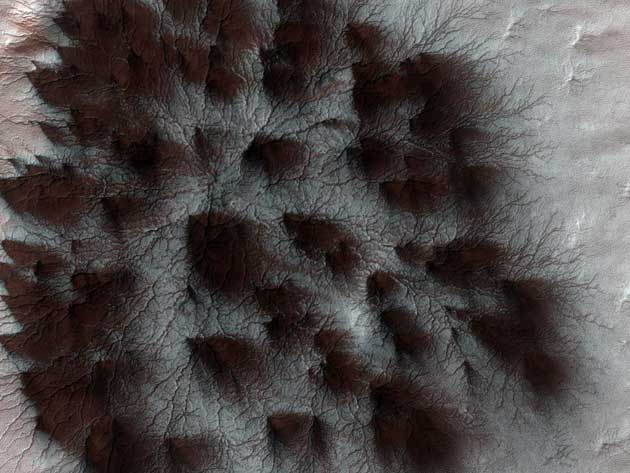Spring on Mars: warmer weather and lots of gas

Your support helps us to tell the story
From reproductive rights to climate change to Big Tech, The Independent is on the ground when the story is developing. Whether it's investigating the financials of Elon Musk's pro-Trump PAC or producing our latest documentary, 'The A Word', which shines a light on the American women fighting for reproductive rights, we know how important it is to parse out the facts from the messaging.
At such a critical moment in US history, we need reporters on the ground. Your donation allows us to keep sending journalists to speak to both sides of the story.
The Independent is trusted by Americans across the entire political spectrum. And unlike many other quality news outlets, we choose not to lock Americans out of our reporting and analysis with paywalls. We believe quality journalism should be available to everyone, paid for by those who can afford it.
Your support makes all the difference.Spring on Earth is marked by daffodils and budding leaves. However spring on Mars sees plumes of carbon dioxide vaporising from solid blocks of dry ice as they warm up in the sunlight towards the end of the Martian winter.
The unearthly nature of a Martian spring has been captured by Nasa's Mars Reconnaissance Orbiter satellite as it circles the Red Planet taking images of dirty plumes of gas carrying dust from the ground up through the openings of the solid carbon dioxide layer covering the Martian poles.
The seasonal polar caps on Mars form each winter because carbon dioxide in the atmosphere changes directly to frost, which builds up into a thick layer of dry ice as much as a metre thick.
As winter ends and spring arrives, the dry ice turns directly from solid into vapour which punches its way to the surface.
"Spring on Mars is quite different from spring on Earth because Mars has not just permanent ice caps, but also seasonal polar caps of carbon dioxide, familiar to us on Earth as dry ice," said Candice Hansen-Koharcheck, of Nasa's Jet Propulsion Laboratory in Pasadena, California.
"What happens on Mars, we think, is that as the seasonal ice cap thins from the bottom, gas underneath the cap builds up pressure. And where gas under the ice finds a weak spot or a crack, it will flow out of the opening, often carrying a little dust from the surface below," said Dr Hansen-Koharcheck.
Images from the High Resolution Imaging Experiment on board the satellite show how the dust patterns form into starburst patterns as they blow through the dry ice.
As the plumes of carbon dioxide emerge they form radial troughs called "spiders", so-called because of the way they look.
Join our commenting forum
Join thought-provoking conversations, follow other Independent readers and see their replies
Comments